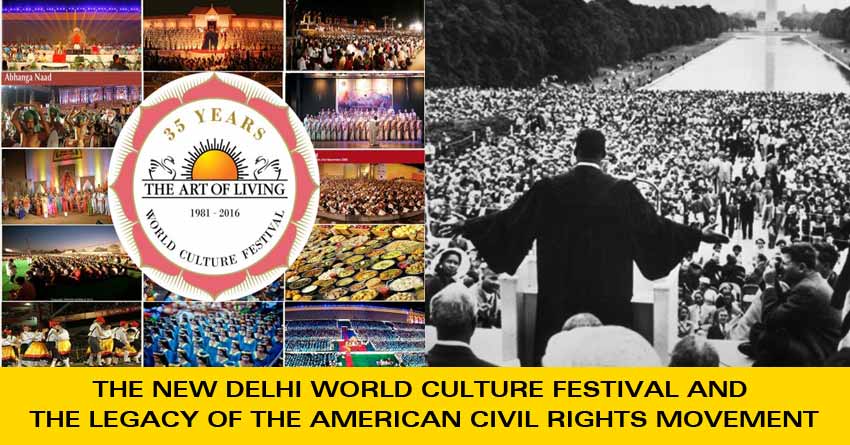New Delhi will be hosting a momentous event from March 11-13th, the World Culture Festival. In the words of Sri Sri Ravi Shankar, the moving force behind the festival: “We are inspired to continue with more enthusiasm and greater speed to realize the dream, where life becomes a celebration and the world will become one family. The World Culture Festival is a celebration of achievements and a vision to do better.” There is a relation between “One World Family” and some of the ideas that inspired Martin Luther King and the American Civil Rights movement. We explore these here.
The history of the civil rights movement in America (1954-1968) is indissociably linked with Martin Luther King Jr., while the history of the civil disobedience movement in India is inextricably linked with Gandhi. Many people draw obvious parallels between King and Gandhi, for a myriad of reasons. As Nirupama Rao, the former Indian ambassador to the United Statespoints out in her piece in Politico, “both shared common values, common strategies and common struggles” and that while the life of both leaders “was cut short by violence, both these prophets of peace still have much to teach a world plagued by war, terrorism, discrimination and divisiveness.”
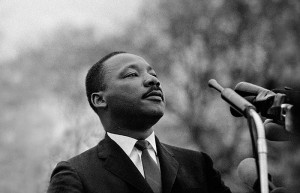 Dr. King led a remarkable civil rights movement. He was only 39 when he was killed on April 4, 1968. His struggle to obtain freedoms, equal rights, justice, and dignity for America’s black population transformed America. The values he stood for, and his message about the brotherhood of people of different races and the unity of all faiths in love and truth resonate even today and are important for all of humanity just as much as eve
Dr. King led a remarkable civil rights movement. He was only 39 when he was killed on April 4, 1968. His struggle to obtain freedoms, equal rights, justice, and dignity for America’s black population transformed America. The values he stood for, and his message about the brotherhood of people of different races and the unity of all faiths in love and truth resonate even today and are important for all of humanity just as much as eve
Not many laypersons are familiar with the extent of King’s own ties to India. Even the 2014 movie Selma, which otherwise does an excellent job of depicting the voting rights marches of 1965–a tremendously significant episode in the civil rights movement, fails to make any references to the movement’s or King’s Indian connections. King was deeply influenced not only by Gandhi but also by India.
While King had been inspired by and drawn valuable lessons from the writings of Gandhi, who had used the philosophy and strategy of ahimsa or non-violence and peaceful non-cooperation to take on the might of the British Empire during the Indian struggle for independence, it was a trip to India that reinforced his determination to “achieve freedom for [his] people through nonviolent means” and strengthened his commitment to peaceful protest which would serve him well in the Birmingham campaign (April 1963) and the Civil Rights March on Washington (August 1963). As Rao has pointed out, India was a revelation that transformed King’s “spear of frustration” into a “shaft of light.”
It was at the time of the historic Montgomery bus boycott, triggered by Rosa Parks’ arrest on December 1, 1955, that King first began receiving input from his advisors about how Gandhian methods like nonviolent direct action could apply to the civil rights movement. King quickly absorbed ideas that proponents of nonviolent direct action in his movement shared with him and “crafted his own syntheses of Gandhian principles of nonviolence.” The success of the boycott and the desegregation of Montgomery city buses following a victory in the US Supreme Court intensified his interest in Gandhi and led him to see the Mahatma as “the guiding light of our technique of nonviolent social change.” Three years later, King would journey to India to “deepen his understanding of Gandhian principles.”
King embarked on a tour of India on 3rd February 1959. It was a five week tour. When the American civil rights leader and his entourage, which included his wife Coretta Scott King, reached New Delhi on February 10, 1959, they were received at the airport by representatives of the Gandhi Smarak Nidhi. Upon his arrival in India, to the reporters who had gathered at the airport, King declared, “To other countries I may go as a tourist, but to India I come as a pilgrim,” revealing how much India had already inspired him.
King and his party travelled across the length and breadth of India, and received invitations to hundreds of engagements throughout the trip. They were showered with what King describes as “the most generous hospitality imaginable.” According to the King Encyclopedia published by Stanford University’s The Martin Luther King, Jr. Research and Education Institute,
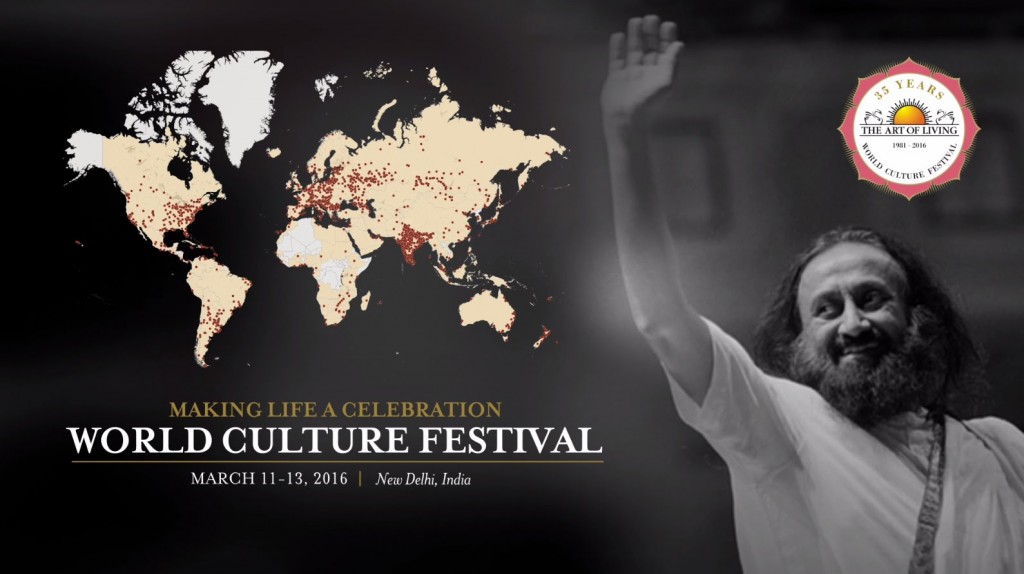
King’s trip to India had a profound influence on his understanding of nonviolent resistance and his commitment to America’s struggle for civil rights. In a radio address made during his final evening in India, King reflected: “since being in India, I am more convinced than ever before that the method of nonviolent resistance is the most potent weapon available to oppressed people in their struggle for justice and human dignity. In a real sense, Mahatma Gandhi embodied in his life certain universal principles that are inherent in the moral structure of the universe, and these principles are as inescapable as the law of gravitation.
Gandhi’s alignment with “certain universal principles” is what made King consider Gandhi, a person steeped in Hindu spirituality, the “greatest Christian of the modern world.” King counted him “among individuals who greatly reveal the working of the Spirit of God.” However, Gandhi himself drew upon Indian spirituality–Hindu and Jain practices and philosophy in particular–for his own inner strength and to fuel his ability to move mountains.
A short video clip that features Pastor Eddie D. Smith Sr., a famous African American preacher who is known for using Namaste as a greeting with his congregation, illustrates Indian spirituality’s encoding of one of the “universal principles that are inherent in the moral structure of the universe” whose embodiment King recognized in Gandhi. Taking ownership of the Hindu concept of Namaste, Pastor Smith brilliantly explains the deep philosophy and the transformation that a conscious understanding of its deeper philosophical meaning can bring.
“The divinity within me salutes the divinity within you” is the essence of Namaste, as the pastor explains in the video. As the significations contained in Namaste indicate, seeing oneself and others as parts of the one Divine, and the ensuing realization of oneness, are the crux of this spirituality. The abjuration of violence, stemming from this vision, was at the heart of the Indian civil disobedience movement led by Gandhi, even if one might want to consider the Mahatma’s own understanding of ahimsa flawed orinaccurate based on the full definition of ahimsa: ahimsa paramo dharmah dharma himsa tathaiva cha.
A point made by the African-American pastor as he explains Namaste is that “we have been mistreating each other for much too long.” Indeed, humans have been mistreating each other throughout human history. My own view is that till the time this does not change, the struggle for civil rights–the struggle for personal, political, and economic rights–will not be over. While it is true that we have come a long way, it is also true that if we look around us, we see that all over the world, in every society and every country, there are still people and groups who deny freedom, equality, justice, and dignity to others. Civil rights continue to be violated in the name of politics, economics, or religion.
One modern voice of Indian spirituality, global humanitarian leader Sri Sri Ravi Shankar, has drawn attention to the need to “spiritualize politics, socialize business, and secularize religion,” in other words, to ignite human values in politics, economics, and society in order to create compassionate political leaders who care for people and their welfare, ethical business leaders who give back to society, and unprejudiced religious leaders who are more inclusive in their love and sense of belonging, regardless of the other’s religious affiliations. The slogan “One Divinity, one humanity, celebrating differences, this is our sacred duty,” is a part of this message.
Giving consideration to this basic premise of Indic philosophical thought, the principle of oneness, one feels that the time has perhaps come for all of humanity to take civil rights to the next level, beyond the dialectic of power and resistance, beyond the concept of ahimsa/himsa, beyond the non-violent and proactive struggles against injustice, inequality, and indignity–all which have undoubtedly worked very well and have brought us where we are today–to a globalized culture of oneness where we all operate with the consciousness that all human beings are a part of one Divinity or one Divine Existence.
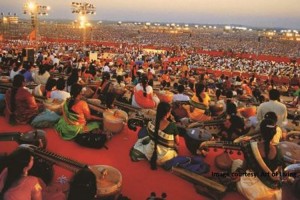 Such a shift in thinking would be good for not just America or India, but the entire world. It would be good for the internal functioning of all societies as well as the external relations between nations. When human values flourish, civil rights flourish. This perhaps would be the best way to take the work of Mahatma Gandhi and Martin Luther King, Jr. forward and consolidate the gains made by the civil rights movement. This would also be a most effective antidote against the biggest contemporary antithesis of civil rights–the ideology of terrorism–that is raging across large swaths of the world today.
Such a shift in thinking would be good for not just America or India, but the entire world. It would be good for the internal functioning of all societies as well as the external relations between nations. When human values flourish, civil rights flourish. This perhaps would be the best way to take the work of Mahatma Gandhi and Martin Luther King, Jr. forward and consolidate the gains made by the civil rights movement. This would also be a most effective antidote against the biggest contemporary antithesis of civil rights–the ideology of terrorism–that is raging across large swaths of the world today.
Despite the violence, strife, and chaos the world saw in 2015, a large part of humanity seems to be already moving in this direction. The World Culture Festival that will take place 11-13 March 2016 will bring together 3.5 million people of all races, religions, nationalities, languages, and cultures from 155 countries to New Delhi who will assemble in one place to meditate together and celebrate diversity, peace, music, dance, human values, and the unity and brotherhood of all religions and races.
The three day festival will be marked by the convergence of spiritual leaders, politicians, business leaders, peacemakers, and artists from across the world who will join each other on a common platform to celebrate the uniqueness as well as the commonality of all the cultures of the world and foster a deeper understanding between people of different faiths, races, nationalities, and backgrounds.
The initiative will be a spiritual and cultural extravaganza that has never before been witnessed on the planet. Showcasing the planet’s rich cultural and human diversity, WCF 2016 will emphasize our unity as one human family, both at the local and global levels. Had he been alive today, Dr. Martin Luther King Jr. would have surely recognized in it the realization of a globalized and scaled-up version of his great dream.
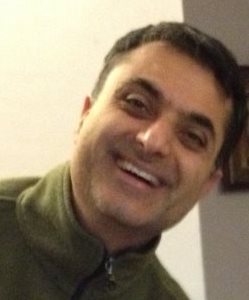 Shonu Nangia is an academic, linguist, and translator-interpreter by training and works as an Associate Professor of Foreign Languages at LSU-Alexandria (USA) where he teaches French and Spanish. His scholarly work has appeared in Electronic Journal of Foreign Language Teaching, Michigan Academician, Folia Linguistica et Literaria, The Journal of College Writing, Louisiana Communication Journal, and a host of other places. He is also the author of the book Male-Female Relations in the Literary Maghreb: Poetics and Politics of Violence and Liberation in Francophone North African Literature by Tahar Ben Jelloun. He also enjoys organizing film festivals and yoga and meditation workshops.
Shonu Nangia is an academic, linguist, and translator-interpreter by training and works as an Associate Professor of Foreign Languages at LSU-Alexandria (USA) where he teaches French and Spanish. His scholarly work has appeared in Electronic Journal of Foreign Language Teaching, Michigan Academician, Folia Linguistica et Literaria, The Journal of College Writing, Louisiana Communication Journal, and a host of other places. He is also the author of the book Male-Female Relations in the Literary Maghreb: Poetics and Politics of Violence and Liberation in Francophone North African Literature by Tahar Ben Jelloun. He also enjoys organizing film festivals and yoga and meditation workshops.
